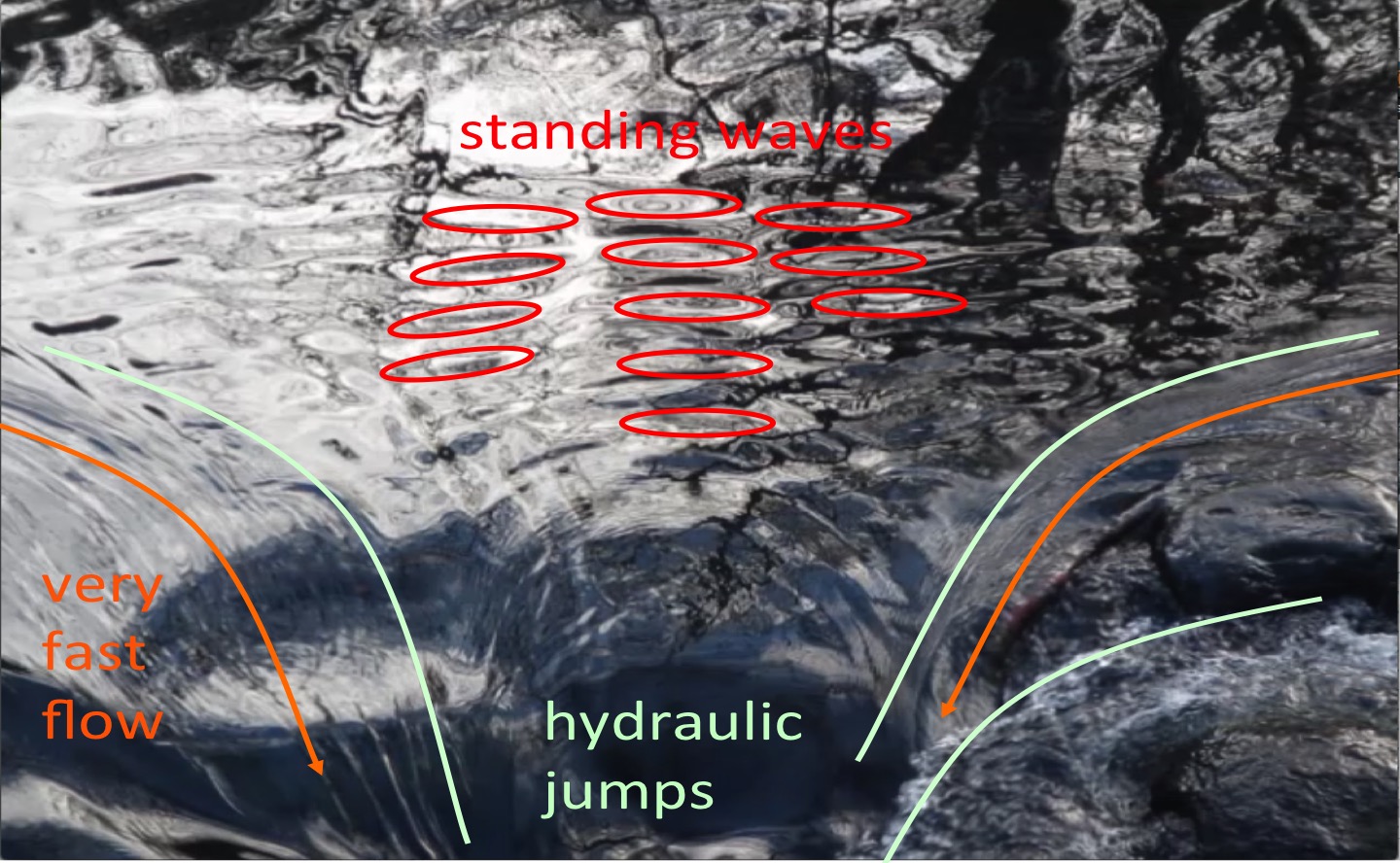Overflow and Hydraulics
Contents
Overflow and Hydraulics#
Overflow - they are everywhere!#
Not only a toilet can overflow! A memory overflow error can ruin a programmer’s morning; 21st-century homo sapiens deal with information overflow every single day; a river can overflow its banks and/or dams and cause flooding; etc. When we talk about overflow, the hidden subject we actually talk about is a constraint, which regulates the flow (hydraulic control). When the overflow goes beyond the capacity of the constraint, influences on the upstream reservoir (upstream influence) and chaos downstream (hydraulic jump) arise.
Think about a perfect semester: you learn something at school, you discuss it with your professor and classmates, you spend the right amount of time working on your assignments, and most importantly, you digest the knowledge along the way, and do not feel overwhelmed or burnout. You feel comfortable and feel that you’ve learned something. That’s how you, as a constraint can regulate the knowledge flow, chaos-free (weakly nonlinear).
hydraulic control
As you feel the course load becomes too heavy on you, you talk to the professor and your classmates. The professor receives feedback from the class and adjusts the courses accordingly and offer help. That’s how a constraint can influence the upstream condition.
upstream influence
In another scenario, you bite off more than you can chew and feel overwhelmed or burnout. The uneasiness piles up, forms shocks, and may stir up chaos (strongly nonlinear). Fortunately, by sending information upstream and changing the upstream condition, you can restore your status and regain the regularity of life.
hydraulic jump
Hydraulics - a zoo of nonlinear topographic effects#
Watch the below video and notice how the water moves:
I hope you noticed the water level shows asymmetry: high on the left of the obstacle and low on the right of the obstacle. Or maybe you even noticed the ping pong ball moves very slowly on the left of the obstacle and cascades down rapidly as it crosses the obstacle. You may also notice the “boiling” waters further downstream where the ping pang ball gets trapped and rolls. Then congratulations, you have identified some of the most important hydraulic phenomena:
the flow is hydraulically controlled by topography
the flow transfers from subcritical to critical to supercritical as it crosses the obstacle crest
at the base of the spillway is a hydraulic jump, where the fluid depth increases abruptly; intense turbulence happens in the jump, and the flow returns to subcritical
We will talk about the terms in bold in this lecture.
Before we start, wait a second, this is an oceanography class, and
what do geophysicists mean when they talk about hydraulics and why should one listen?
the ocean moves and the seabed is not flat: ridges and basins, channels (contractions) and straits (bottom elevations), …
topography blocks the densest water from entering the next basin, draws down the interface level, causes “mixing hotspot” downstream, …, an important chain in the Meridional Overturning Circulation.
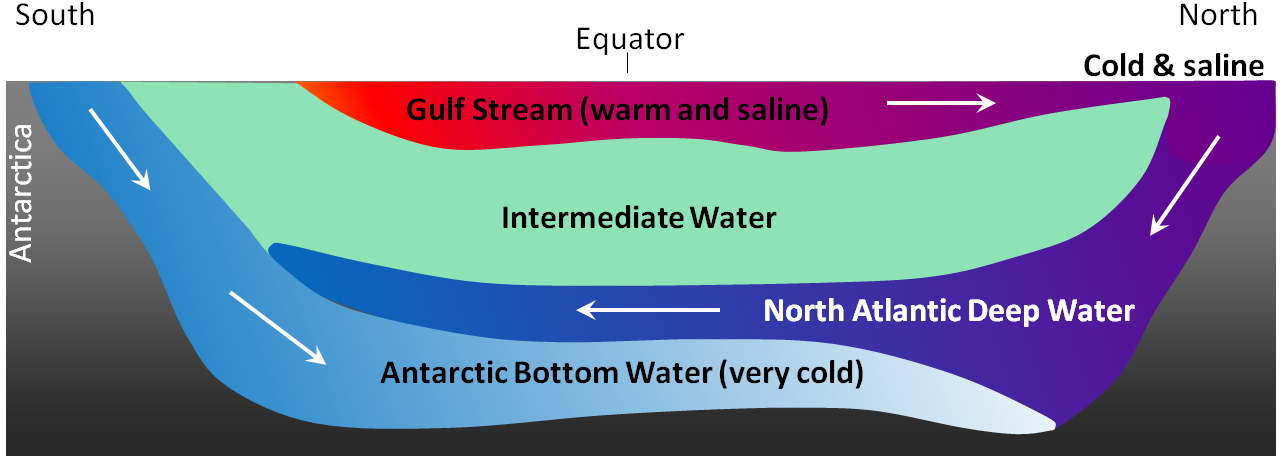
Fig. 1 Fig. 18.4.8 in Earle and Panchuk (2019): Schematics of major ocean masses, the ocean bottom in the schematics is flat, which is not true.#
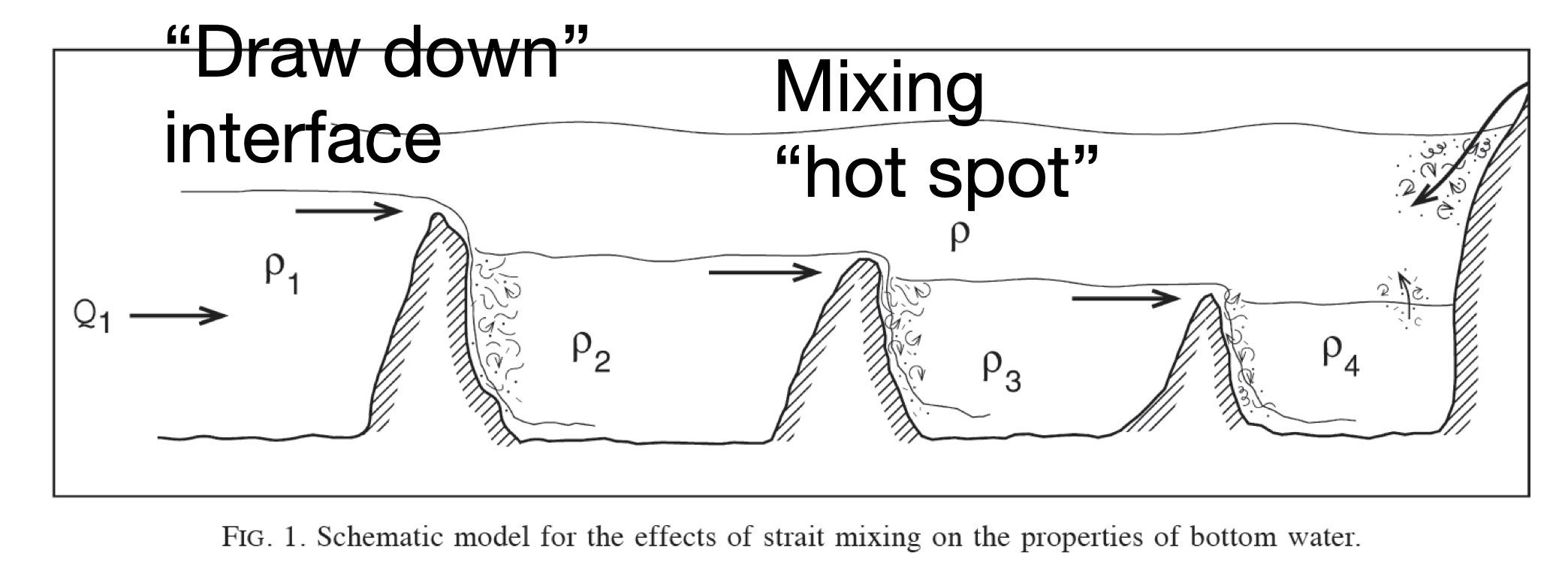
Fig. 2 Fig. 1 in Bryden and Nurser (2003): Schematic model for the effects of strait mixing on the properties of bottom water, notice that basins are divided by ridges and connected by passages.#
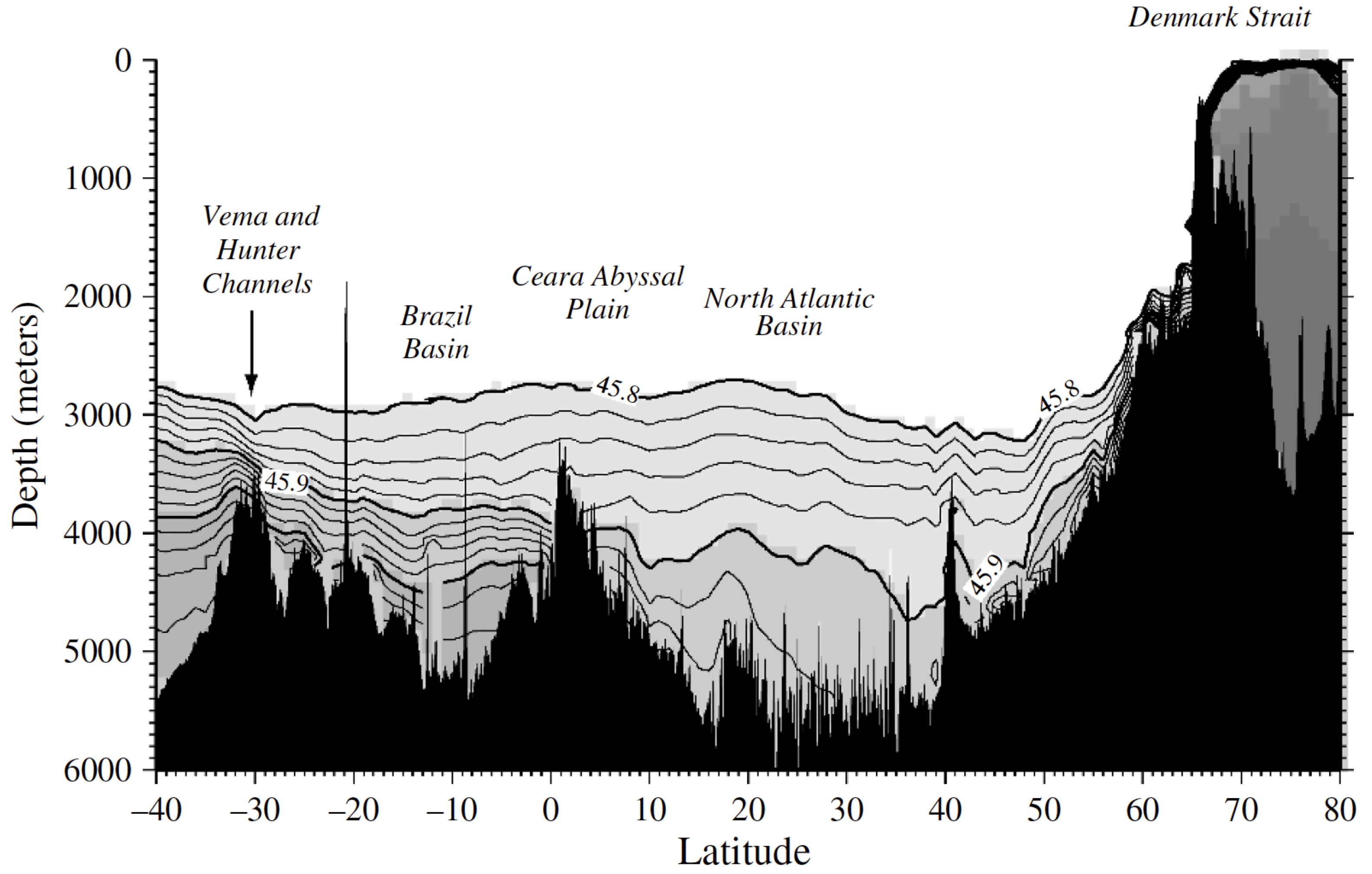
Fig. 3 Fig.1.5 in Pratt and Whitehead (2008). Plot by T. McKee and R. Curry: Notice that the coldest part of the NADW generated in the Nordic Seas is blocked by the shallow Denmarks Strait (650 m), and the isopycnal descends after crossing the Denmarks Strait. However, since the Vema Channel is much deeper (4614 m), a general portion of the cold and dense AABW enters the Brazil Basin and fills the bottom of the basin.#
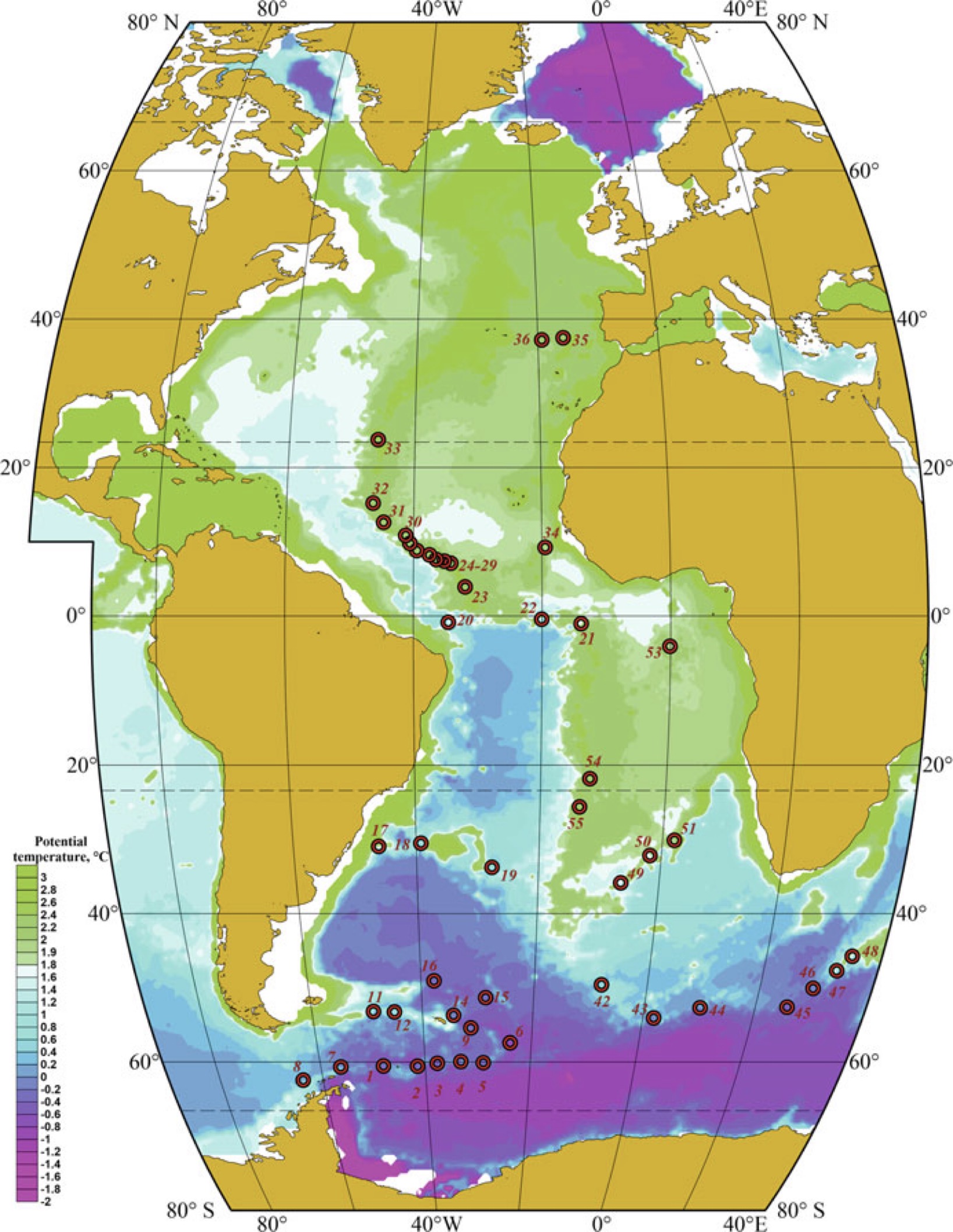
Fig. 4 Fig. 2.3 in Morozov et al. (2021) Climatic distribution of the bottom potential temperature (\(^{\circ}\)C) and deep channels in the Atlantic Ocean. Note the bottom temperature of the Nordic Seas (purple patch on the north end) is as cold as that of the Weddell Sea (purple patch on the south end) but the bottom temperature of the Northern Atlantic basin is much warmer than basins in the Southern Atlantic.#
1. Hydraulic Control#
1) Theory#
Below we take a single-layer non-rotating fluid as an example. The waves that are relevant to hydraulics are shallow water waves, who are gravity waves that oscillate up and down due to buoyancy differences at the interface. Waves near topography getting caught by background flow is the key to hydraulic control.
i) Shallow water waves#
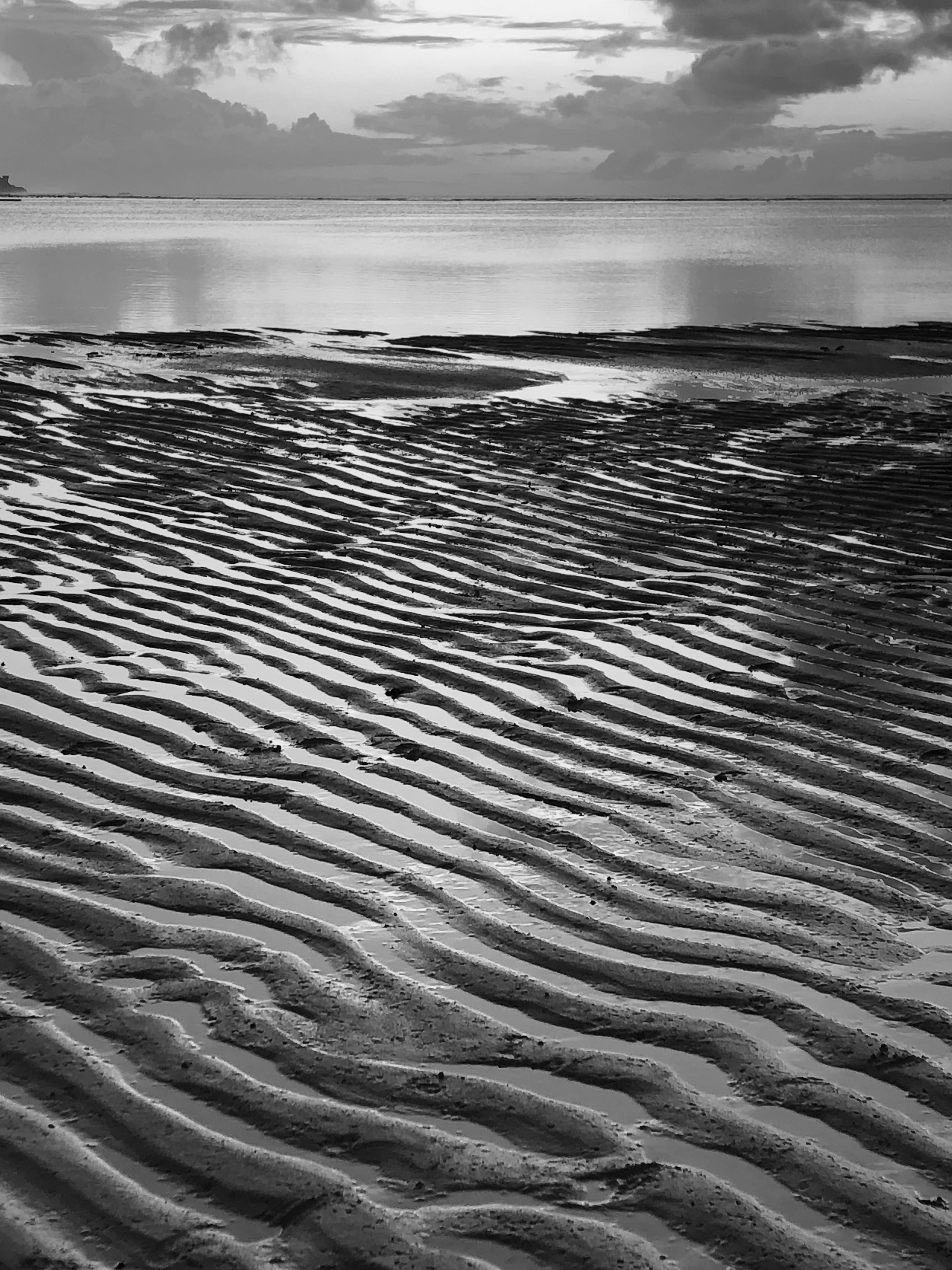
Fig. 5 Sand Ripples took in front of Alupang Beach Tower, Guam. As the bottom water particles contain much momentum for shallow water waves, they can move the sands back and forth and leave the “footprint” of waves.#

Fig. 6 Shallow Water Wave, Animations by Kraaiennest, Wikimedia Commons, Creative Commons A S-A 3.0. Notice the particles from surface to bottom all move significantly.#
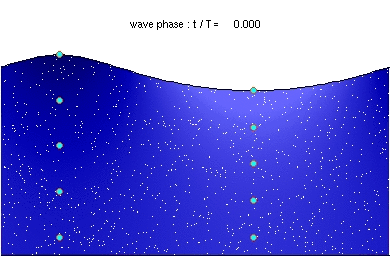
Fig. 7 Deep Water Wave, Animations by Kraaiennest, Wikimedia Commons, Creative Commons A S-A 3.0. Notice the particles near the bottom barely move.#
Shallow water wave speed
ii) Who is faster, the currents or the waves?#
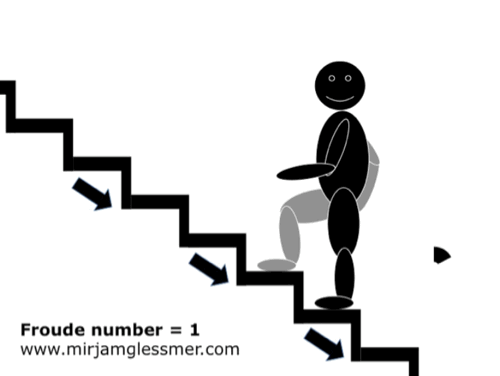
Fig. 8 Fr=1 illustration by Dr. Mirjam S. Glessmer. You’re watching a “stationary wave”, that gets caught by the background flow.#
iii) Subcritical, critical, supercritical#
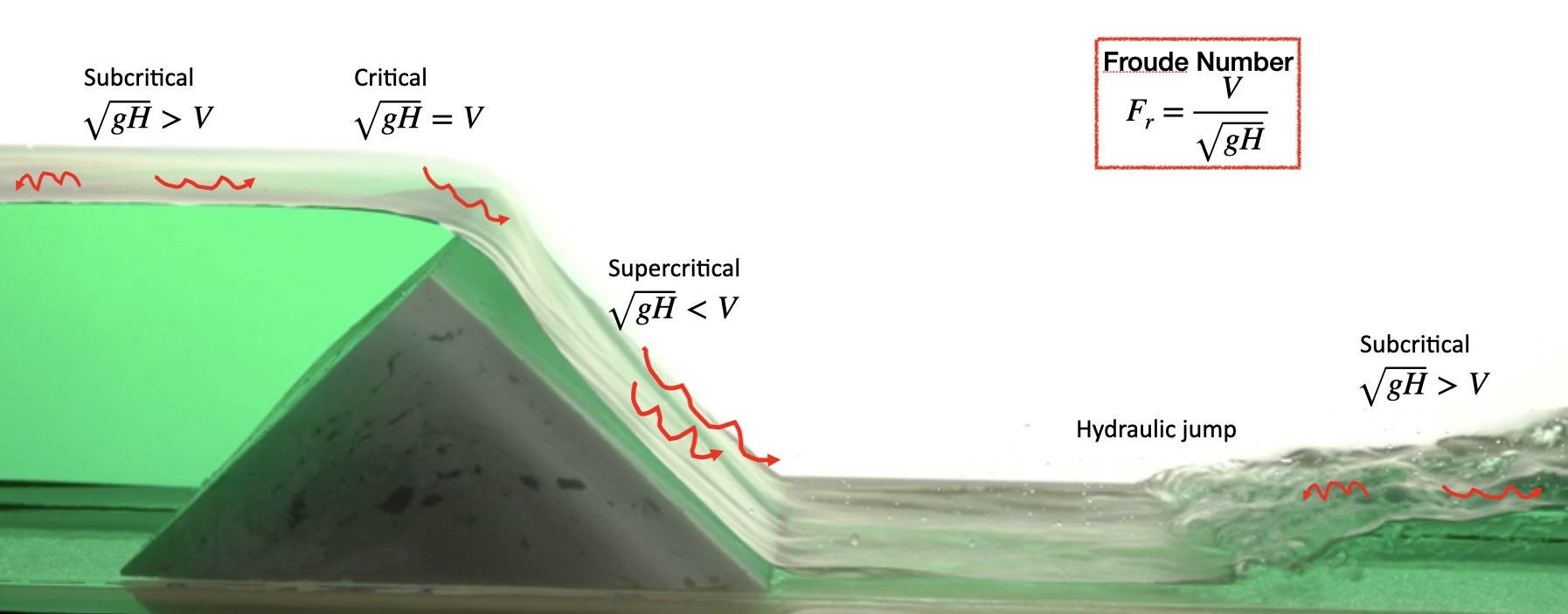
Fig. 9 Hydraulic transition from subcritical to critical to supercritical at the sill, and from supercritical to subcritical crossing the dissipative hydraulic jump. If there is no background flow, a wave would propagate in both upstream and downstream directions. When the background flow speed is small (\(F_r\)<1), the wave can still propagate towards both directions, the flow is subcritical. When the background flow speed equals wave speed (\(F_r\)=1), the wave becomes stationary, the flow is critical. When the background flow speed is sufficiently large (\(F_r\)>1), all waves propagate downstream, the flow is supercritical, and no information can go upstream.#
iv) Hydraulic Regimes#
Waters can run over an obstacle freely and not change its surface level if the obstacle is short enough. For a tall obstacle, hydraulic control may occur, and asymmetry in terms of surface level can be observed. A hydraulic jump at the lee side of the obstacle may occur. An even taller obstacle or a suddenly increased inflow may send a bore moving upstream and alter the upstream condition (see section 3). A very tall obstacle can block the entire flow.
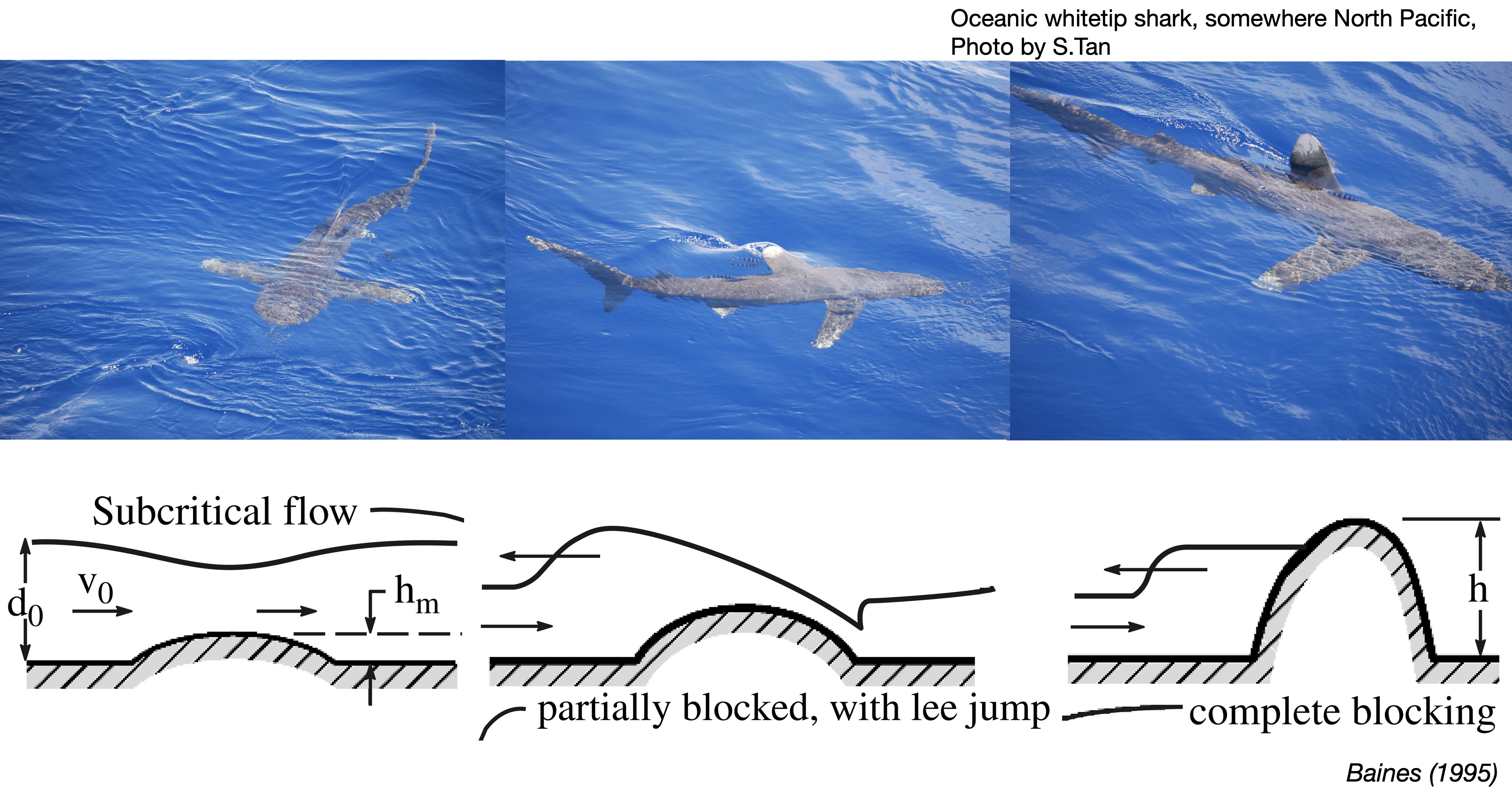
Fig. 10 Oceanic whitetip shark took somewhere at 30\(^{\circ}\)N in the North Pacific. Do you see how the “shark hydraulics” in the upper panel resembles three different hydraulic regimes in Baines (1995)? Also see section 1.7 in Pratt and Whithead (2008).#
v) Weir Formula#
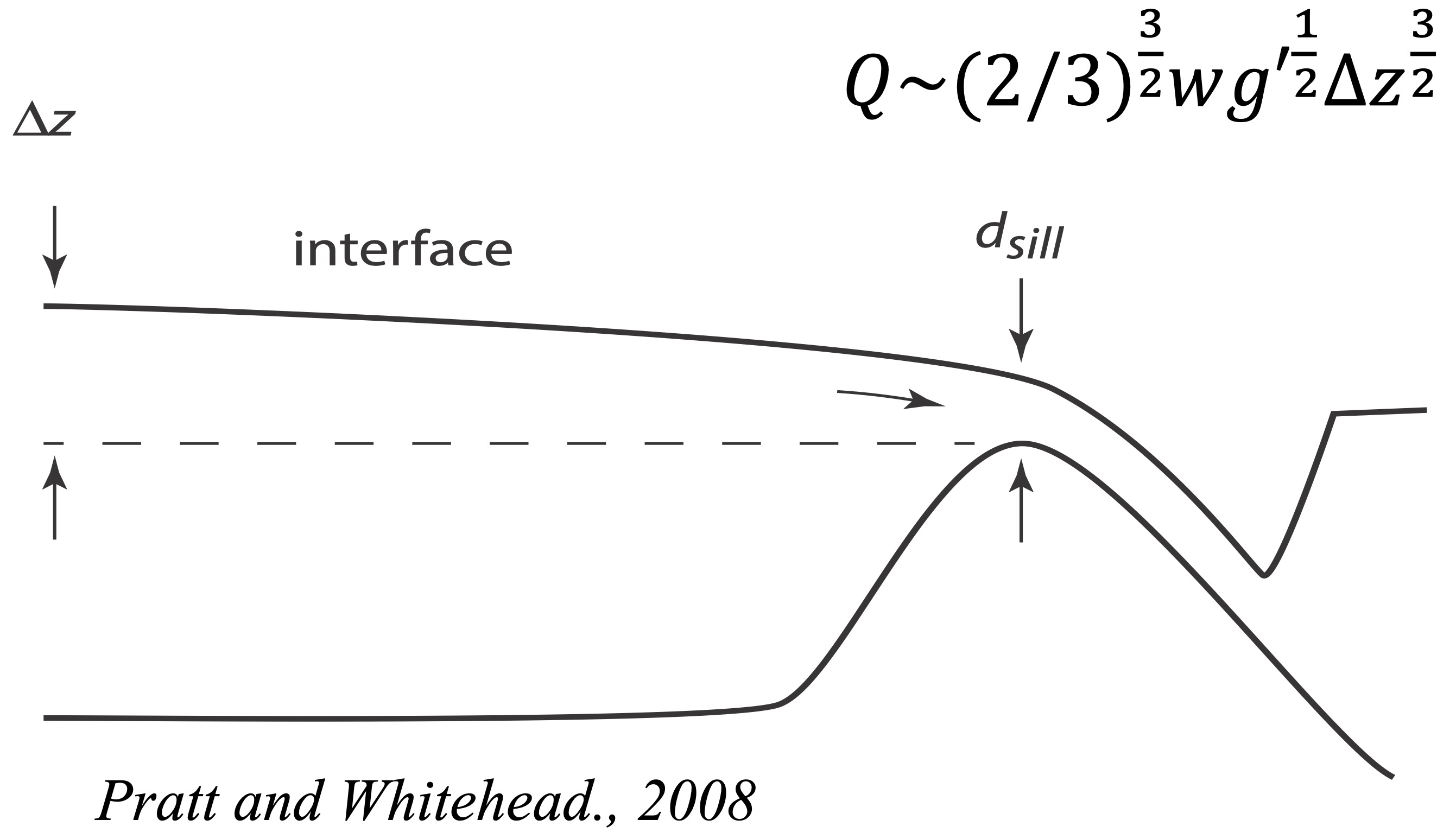
Fig. 11 Weir formula: transport of a hydraulically controlled flow being a function of channel width \(w\), reduced gravity \(g'=\frac{\Delta \rho}{\rho_0}g\), and the height difference between the interface of the overflow and the sill top. This is advantageous as direct velocity measurements of the overflow are scarce and expensive.#
This allows oceanographers to estimate the transport of overflows without expensive and technically difficult velocity measurements.
2) Applications to overflow#
Hydraulic theory helps oceanographers estimate the volume flux and structure of overflows in deep ocean channels/straits. It helps us to monitor and predict the change of the Meridional Overturning Circulation. As climate models often do not have enough resolution to properly simulate the hydraulic behaviors, parametrization of hydraulic flows is important.
i) Application 1: transport estimate#

Fig. 12 Fig. 2.1 in Morozov et al. (2021) Bottom topography and main deep cataracts of the Atlantic Ocean. Red and magenta ellipses show the cataracts related and not related to the propagation of Antarctic waters in the abyss of the World Ocean. The arrows show the general direction of the flow in the cataracts. The weir formula can help us estimate the volume fluxes of the overflow.#
ii) Application 2: long-term monitoring#
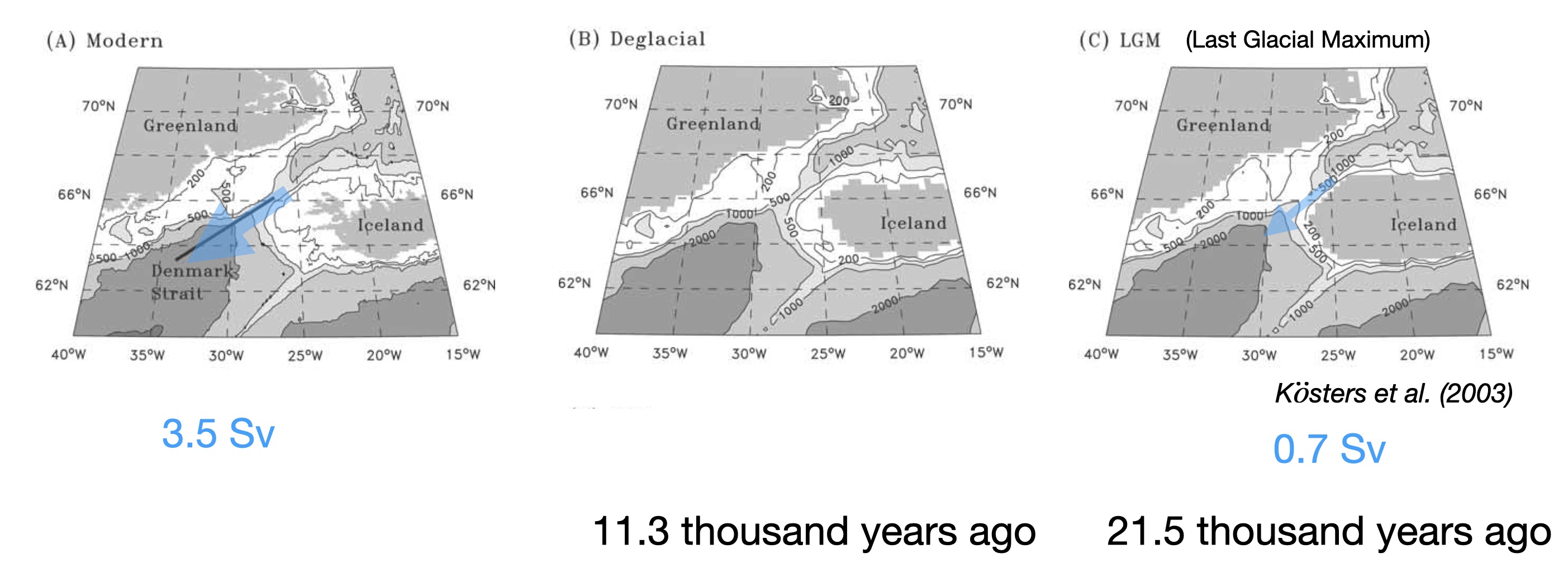
Fig. 13 Adapted from Fig. 1 in K\(\ddot{o}\)sters et al. (2003). The Denmark Strait is deeper submerged under water in morden era compared to the last glacial era, and thus allows more overflow flux.#
2. Hydraulic Jump#
Downstream of a hydraulically controlled flow, one can often observe the presence of a turbulent hydraulic jump. Hydraulic jumps have been observed downstream of many deep sea strait overflows including the Samoan Passage in the Southern Pacific Ocean, Fracture Zone valleys in the Brazil basin, etc. They are “mixing hotspots” and potentially play a huge role in closing the Meridional Overturning Circulation Thurnherr et al. (2020).
1) Shock waves#

Fig. 14 Wikimedia Commons, Creative Commons A S-A 3.0. A common example of a hydraulic jump as the fast flow from the faucet rapidly slowing and piling up on top of itself, essentially a shockwave. The jump is at the transition between the point where the circle appears still and where the turbulence is visible.#
Fig. 15 Tidal bore (‘bore’ and ‘jump’ are essentially the same here) shot in Laniakea Beach, Honolulu. Note the “water wall” built at the turtle’s face, the sediment and seaweed clouds and the water splashes suggest the turbulent nature of the bore.#
2) “Mixing hotspot” in the ocean#
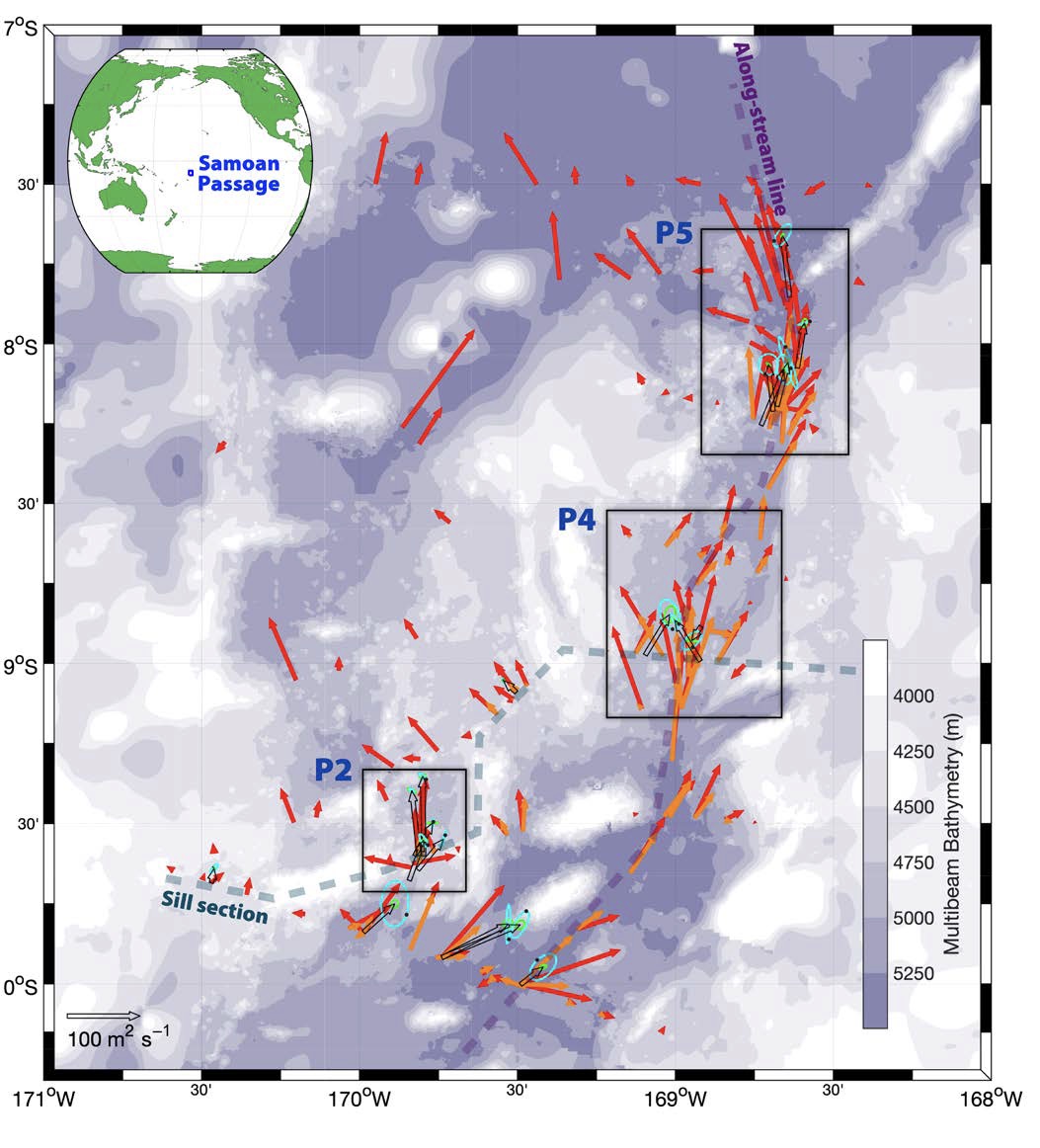
Fig. 16 Fig. 1 in Girton et al. (2019). Overview of the Samoan Passage region with vectors showing transport measurements from lowered acoustic Doppler current profiler (LADCP).#
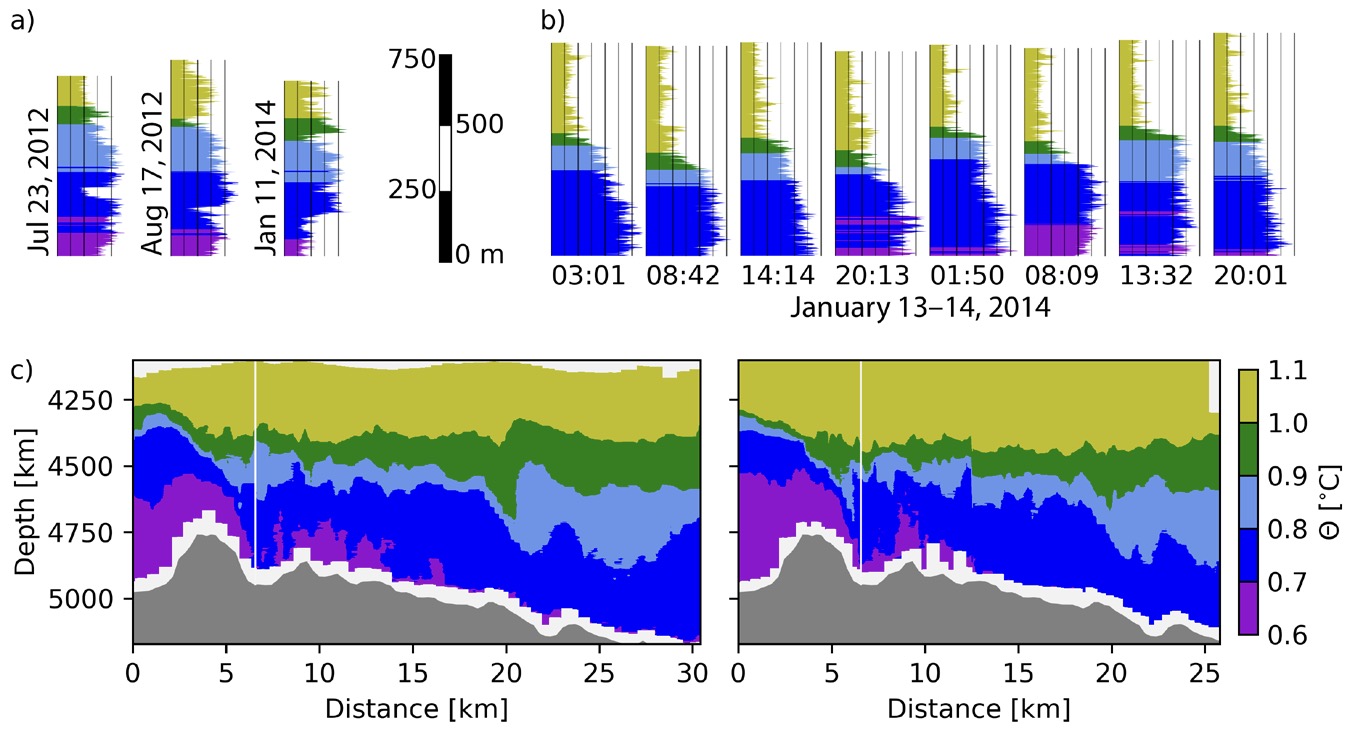
Fig. 17 Fig. 7 in Carter et al. (2019). (b) Dissipation profiles from a 36-hour time series collected just downstream of the P5 sill (white lines in panel c). (c) Two along channel towed CTD/LADCP sections taken 17 months apart. See Alford et al. (2013) for details of track location. The left panel plots observations from the 2012 cruise and the right panel from the 2014 cruise.#
3. Upstream Influence (optional)#
Thought experiment (think first):
Suppose that the reservoir is fed by river runoff and drained at the same rate by the discharge over the dam. The whole system is in a steady state. Now somehow the elevation of the dam crest is raised. How would the system adjust to the change of topography?
If the elevation of the dam crest is raised, the height of the reservoir surface above the dam is diminished and the volume outflow decreases. The river runoff now exceeds the outflow and the excess is stored in the reservoir. The reservoir level rises and eventually the original outflow rate is restored. The actual sequence of events may be a little more complicated than what we have described, but the result is essentially correct: the dam influences the time history of the discharge.
- Introduction, Pratt and Whithead (2008)
I hope you get the idea of how a flow can get regulated by topography (i.e., hydraulic control) and how topography can exert upstream influence, meaning a permanent alteration of the upstream flow.
To ease your burning curiosity#
contact me! shuwent@ldeo.columbia.edu
for the pdf of materials and more books
to watch waves and take photos of them
to discuss and thought experiment
Books!#
Rotating Hydraulics - Nonlinear Topographic Effects in the Ocean and Atmosphere by Pratt and Whithead
- for hydraulics overview and ocean application: Introduction, section 2.14
- for the essence of hydraulics (wave & flow): section 1.1-1.4
Bottom Gravity Currents and Overflows in Deep Channels of the Atlantic Ocean by Morozov et al.
- for a comprehensive review of ocean passages/straits and overflow
Descriptive Physical Oceanography, An Introduction by Talley et al.
- for a comprehensive introduction of oceanography, good for this course in general
Topographic Effects in Stratified Flows by Baines
- a challenging book to read, no pdf, but I have a hard copy you can borrow from
Linear and Nonlinear Waves by Whitham
- for those who wants to look into the math behind waves and hydraulics
Website!#
National Committee for Fluid Mechanics Films (NCFMF)
- strongly recommended for anyone who are interested in fluid mechanics, art & masterpiece
- for waves & hydraulics Stratified Flow, you will see the famous Robert Long’s towing experiment!
Dr. Mirjam S. Glessmer’s blog for videos and more!
- hydraulic jumps, wave-watching, kitchen oceanography, a ture adventure!



